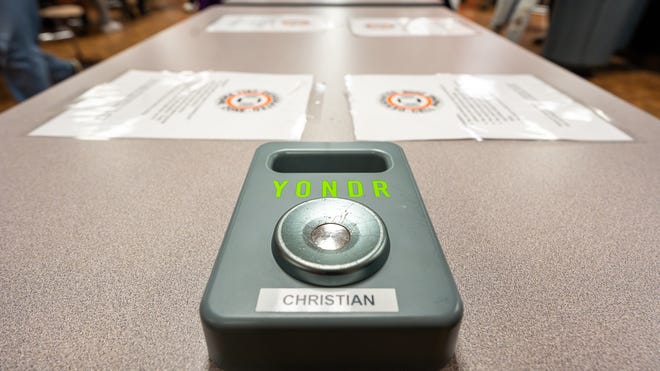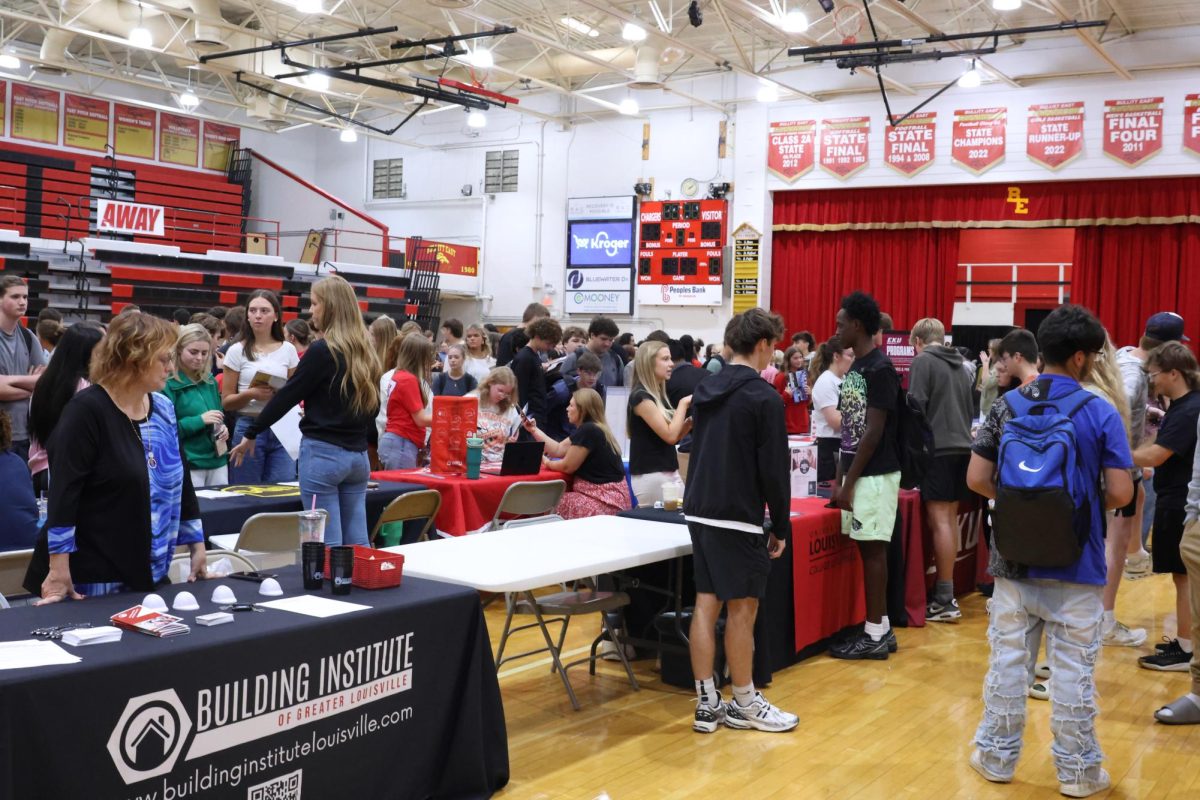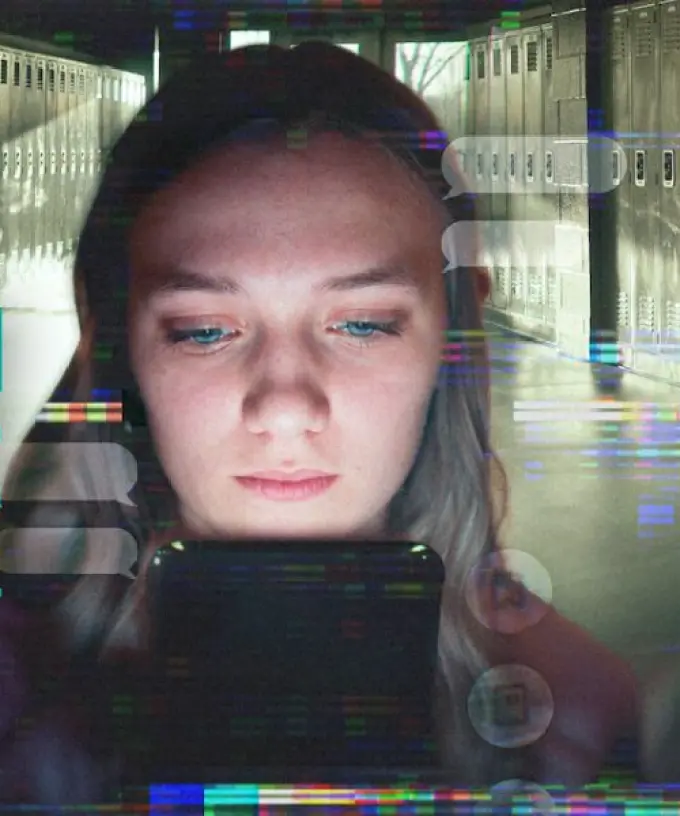For student journalists, phones aren’t distractions — they’re how we record history.
With Kentucky’s new statewide cell phone ban, also known as House Bill 208, taking effect in public schools this fall for the 2025–2026 school year, a new layer of concern is being talked about. One that involves what the future will look like for student journalists. While the goal of decreasing screen time in the classroom is understandable, this one-size-fits-all policy completely overlooks student needs in academic and professional programs that heavily rely on mobile technology to function properly. Some districts have already started the process of enforcing this policy, along with many stricter bans. On the other hand, others, like Bullitt County, are still determining what their specific policies will look like. For student journalists, this isn’t just about losing access to our screens, it’s about losing access to our most vital tool for covering breaking news all around us.
“The new cell phone ban will certainly bring an adjustment period for student journalists, especially those used to relying on mobile devices for quick access, documentation, and real-time reporting,” Nate Fulghum, now former Bullitt East Principal, said. “With some thoughtful planning and flexibility, journalism programs can continue to thrive and provide students with authentic, hands-on learning experiences in reporting and media production.”
Phones are very useful and major for recording news, and finding out the news can happen within the blink of an eye, so time is definitely of the essence. There are many purposes for them, such as recording interviews, performing quick fact checks, live-tweet games throughout every season, and communicating with teams for different reasons like interview quotes and scores. Real, raw journalism doesn’t happen on paper alone, it happens in real time. Without reliable phone access, we’re asked to report the news without the important tools that even make it possible.
“Since we adopted Slack in our program, students have exchanged some 83,000 messages,” Larry Steinmetz, Bullitt East journalism teacher and adviser said. “Real-time communication is essential for student journalists. If you are out in the field and need something, I need to be able to communicate with you immediately. Rooms and email are not built for that.”
This policy may aim to help students focus more in the classroom, but for those of us preparing for careers in media and communications, it could potentially do more harm than good.
According to a 2022 report from Common Sense Media, over 84% of teens say they use their phones for school-related tasks, including research, collaboration, and communication with teachers and peers. When it comes to student journalism, this usage goes much deeper. A phone isn’t just a regular multipurpose tool — it’s a full-on mobile newsroom. From recording voice-to-text interviews to capturing breaking photos at sporting events and sharing updates through social media, student reporters use their phones to hit deadlines and connect with real audiences.
Research also shows that students in CTE pathways including media, journalism, and communications report significantly higher reliance on mobile technology for real-time learning. A 2023 Education Week survey found that 63% of journalism and media teachers said smartphones are “critical or very important” to student success in the classroom. When policies fail to distinguish between misuse and meaningful use, programs like journalism get caught in the crossfire. That could harm both students and the quality of school coverage. We can’t be expected to produce professional-level content with professional-level responsibility, yet be stripped of the tools that even make that possible.
“In every way,” Steinmetz said when asked how the ban would affect programs like journalism. “It is not possible to run a newsroom without something like Slack. This is not a regular class. We are putting out industry-quality work. Access to industry-standard communication is essential. I ran the analytics for May 31 to June 12 and we have exchanged 283 messages. That’s without school in session. There is no need for a math teacher to talk to students in the summer unless they coach a sport. The nature of what we do is different.”
Despite journalism being a major area affected by this policy, it’s not the only one. Students in broadcasting, yearbook, and even dual credit courses like JCTC (in Bullitt County) use their phones for assignments and instructor communication. Leadership students use phones to assist with planning. Others rely on them to organize certain club activities (no matter how big or small) or stay updated on various travel events. This isn’t even about kids wanting to binge scroll on TikTok during class because they’re bored or “don’t want to do work”, it’s about actually trusting students to use technology responsibly with a real purpose.
Instead of applying the policy the way it is, schools need to collaborate with advisors and educators to create flexible rules that allow purposeful use under reliable supervision. Some teachers already have systems that balance access and accountability, like allowing phone use for interviews or assignments, then having students put them away when done. Others collect phones but allow access when necessary. Giving teachers control based on classroom needs, especially in programs like journalism, is far more reasonable than an outright ban.
But the truth is, this policy isn’t just about screen time. It’s about opportunities that could change lives. When teachers trust students with tools and hold them to professional expectations, students rise to the occasion. When policies assume the negatives of us, we lose the potentially life changing opportunity to grow, create, and prepare for the future. Journalism is all about capturing life’s precious moments, telling the truth, and giving others a voice. Without phones, we risk losing even our own voices.
“I understand the intent of the bill,” Steinmetz said. “The problem is it sends district leadership scrambling to figure out how to manage it, and it’s very difficult for them to understand the needs of all the clubs and programs within the district. This is something that we have to work with the district to resolve, or we will not be able to meet our staff expectations.”
Although the policy allows for some flexibility, such as teacher-authorized phone use for instructional purposes or emergencies, it leaves lots of concerns. What happens when a student journalist needs to record an interview during study hall (sometimes their only chance depending on schedule, deadlines/time crunches, etc), perform a quick fact check, or report breaking news in real time as it’s coming out? Some teachers may be all for it, while others might be against it. That inconsistency puts our entire work at risk.
“I would encourage students to creatively think about how things can be different,” Fulghum said. “Change is hard and sometimes frustrating, but it can also lead to better outcomes and push us to improve in ways we hadn’t considered before. My experience with our students—especially our student journalists—is that they are incredibly resilient. They adapt quickly, learn new skills and processes, and continue to excel regardless of the challenge. This is an opportunity to explore new tools, workflows, and approaches to storytelling. Stay flexible, lean into innovation, and trust in your ability to grow through the process.”
In the end, this goes way deeper than avoiding rules. It’s about doing our jobs as student journalists to the very best of our abilities. If we’re trusted to tell the stories of our schools, we should be trusted with the tools that make those stories possible.








